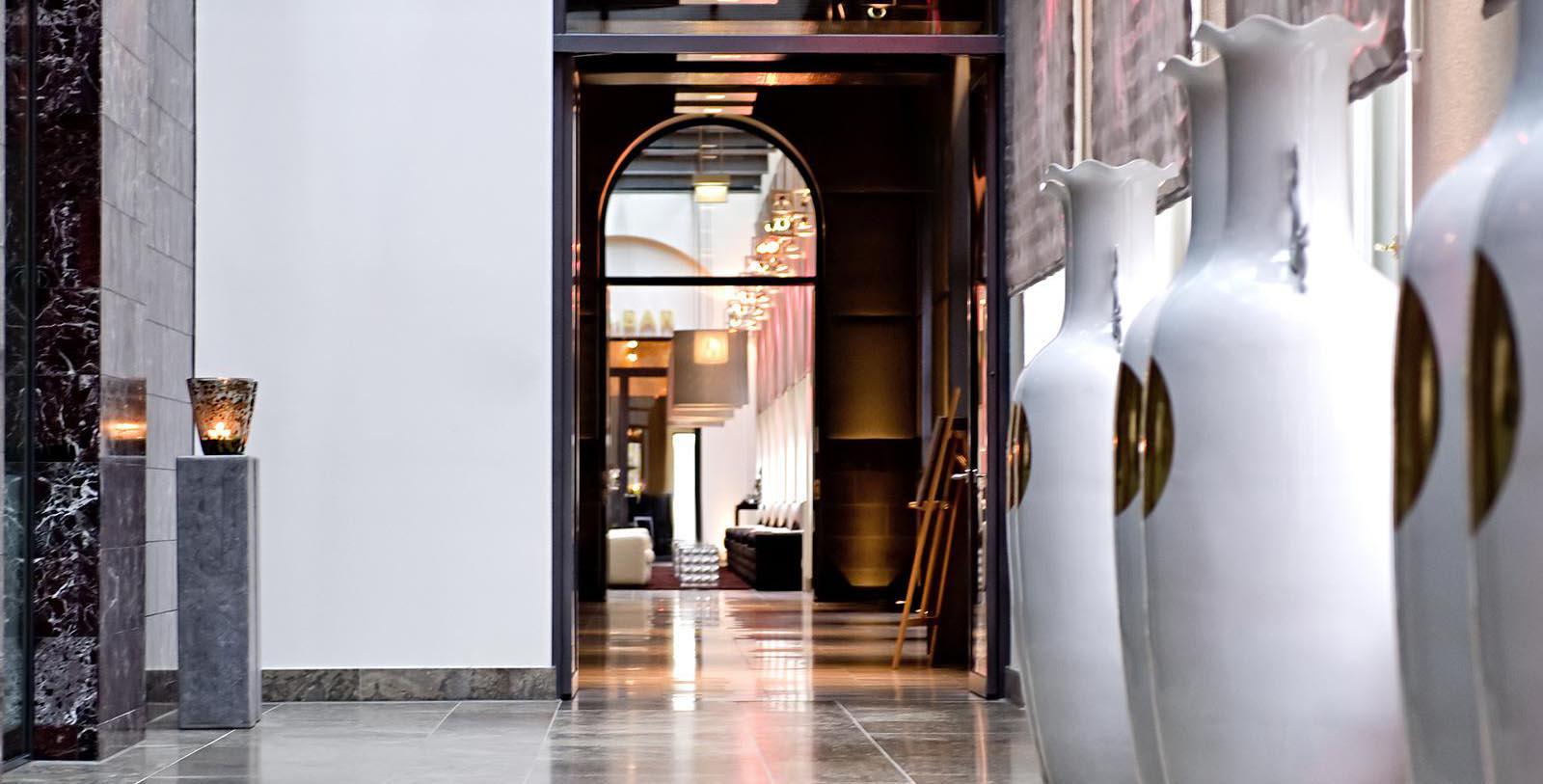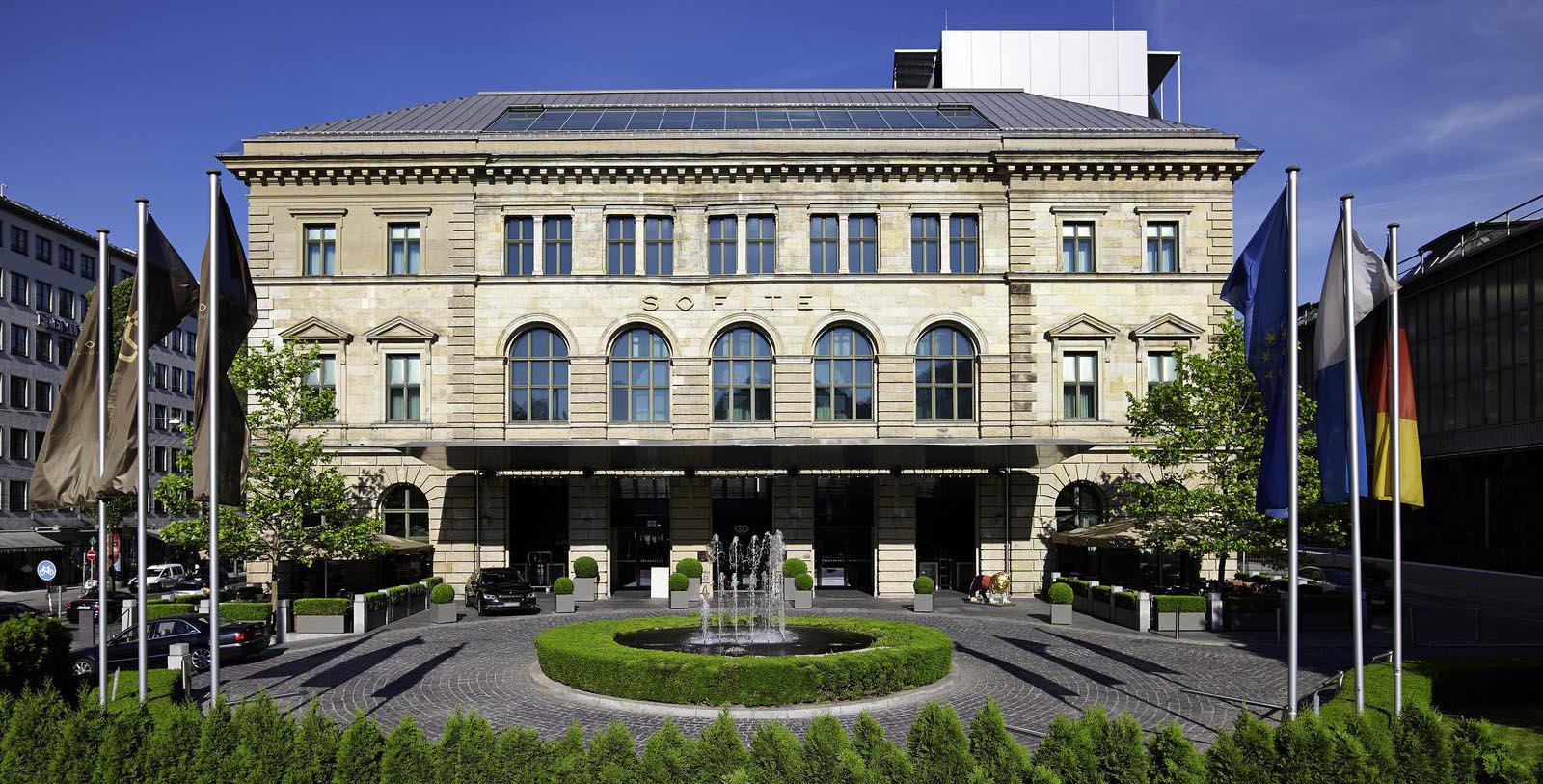Receive for Free - Discover & Explore eNewsletter monthly with advance notice of special offers, packages, and insider savings from 10% - 30% off Best Available Rates at selected hotels.
history
Discover the Sofitel Munich Bayerpost, which was originally the Royal Bavarian Post Office at the beginning of the 20th century.
Sofitel Munich Bayerpost, a member of Historic Hotels Worldwide since 2018, dates back to 1896.
VIEW TIMELINEA member of Historic Hotels Worldwide since 2018, the Sofitel Munich Bayerpost was constructed during the historic reign of the United Kingdom’s famed Queen Victoria, who sat on the British throne from throughout most of the 19th century. Built between 1896 and 1900, this building originally served as the Royal Bavarian Post Office. It operated separately from the rest of the German postal system—known as the “Deutsche Reichspost”— and was the most important distribution center for mail throughout the Kingdom of Bavaria. But its special independence would not last for long. Government officials later united the Royal Bavarian Post Office with the rest of the German postal system during the Weimar Republic. The local Bavarian government continued to operate the building as a post office for the next several decades until 1993. In recent years, Sofitel began operating the building as part of its line of world-class luxury hotels. To help make the building more appealing to a modern audience, AccorHotels hired local architects Fred Angerer and Gerald Hadler to renovate the entire structure. Angerer and Hadler oversaw the renovations from 2002 to 2004, opening up the floor plan to feature new spacious areas that they then decorated with avant-garde architecture. Sofitel also utilized the talents of interior architect Harald Klein to redesign the hotel’s guestrooms. Harald relied upon contemporary French architectural styles to build the new rooms, including ten new, historically themed suites. Now known as the “Sofitel Munich Bayerpost,” this fantastic historic hotel continues to be among the best holiday destinations to visit in all of Germany.
-
About the Location +
The city of Munich can trace its lineage all the way back to a group of Benedictine monks who first settled the locale at the height of the Dark Ages. Attracted by its fertile plains and proximity to Rome, the priests prospered in the area for some time. They specifically congregated around a crossing on the Isar River, which quickly became an integral part of the regional salt trade. At the behest of the Roman Catholic Church, the monks created a toll bridge that would generate tithes for the papacy. But in the 12th century, a medieval lord named Henry the Lion decided to obtain the bridge for himself. Already a powerful German prince, he yearned to further increase his influence by obtaining the salt routes that cut through his realm. In 1158, Henry enacted his plans, seizing the bridge and destroying it outright. Once the blaze had finally died out, the duke built a new bridge and granted it to the monks to operate it on his behalf. Furthermore, Henry the Lion allowed for the Benedictines to develop a new market town around the site. The settlement grew rapidly over the next two decades, as its position along the main Bavarian salt road attracted hundreds of settlers. By the 1170s, it had grown so large that it was even given the status of an official city known as “Munich.” (Munich was an adaptation of the medieval German word that meant “monks.”)
In 1240, Otto I Wittelsbach became the new Duke of Bavaria, thus obtaining Munich in the process. The Wittelsbach family would subsequently rule over the entire region for generations. The family expanded their power from Munich, elevating the city to the status of the Bavarian capital. They even went as far as to use the community as the official royal seat for whenever one of their own were elected as the Holy Roman Emperor. Munich prospered significantly under the Wittelsbachs, its economy bolstered by its relationship to the lucrative European salt trade. The size of the city expanded exponentially as such, with dozens of magnificent new structures appearing ever year. Among the beautiful medieval structures that opened shortly after the Wittelsbach family assumed power were the Altes Rathaus (Old Town Hall) and the Frauenkirche. Still, Munich experienced periods of hardship, enduring such calamities like a massive fire and plague in 1327 and 1429, respectively. The city also suffered greatly during the tumultuous Thirty Years War after the Wittelsbachs fought against their Protestant neighbors as part of the Catholic League. In fact, King Gustav II Adolph of Sweden besieged the city in the 1640s. Furthermore, the war brought a new wave of pestilence into Munich, which saw a third of its population killed.
Even though it took a while for Munich to recover, the city eventually emerged as a center for the Enlightenment in the 17th and 18th centuries. The city specifically developed a reputation for its baroque architecture, with Italian architects training in the city for years. Munich subsequently changed into a modern European city, as its medieval fortifications were torn down in favor of newer buildings that displayed all kinds of contemporary Western design aesthetics. Among the greatest structures developed at the time included the Theatinerkirche (Theatine Church) and the stunning Scholls Nymphenburg (Nymphenburg Palace). Brilliant outdoor parks opened across the city, too, like the iconic Englischer Garten (English Garden). But many famous local traditions also started in the city, such as the first Oktoberfest, which occurred for the first time in 1810. The Wittelsbachs continued to rule over Munich, despite a brief period where they subjected themselves to Austrian authority in the 1700s. Their stewardship managed to save both the city and Bavaria from further socioeconomic adversity, highlighted by Maxmilian I Joseph Wittelsbach’s alliance with Napoleon Bonaparte amid the Napoleonic Wars. The pact subsequently elevated the Dukedom of Bavaria to the status of a kingdom, with Munich itself serving as the capital.
Now the cultural heart for the Kingdom of Bavaria, Munich experienced an unprecedented boom in both construction and population. Factories and housing complexes constituted a majority of the building projects, although some outstanding landmarks—such as the Königsplatz—made their debut, as well. Munich’s transformation into a modern city was also accompanied by the development of an active intellectual community that made advancements in fields ranging from Impressionist art to classical music. Some of the greatest German artists, writers, and musicians were active inside the city, including Thomas Mann and Richard Wagner. But this era of prosperity came to an abrupt end following the aftermath of World War I. (The Kingdom of Bavaria had been absorbed by Germany in 1871.) The economy sputtered in the conflict’s wake, which grew worse when the Great Depression began a little more than a decade later. Starvation ran rampant and its populace suffered greatly from the causalities the war had inflicted. The last Wittelsbach monarch—Ludwig III—was even forced to go into hiding, ending nearly seven centuries of dynastic rule.
Social tension spread quickly with far-left and far-right political factions vying to fill the power vacuum. By 1933, the Nazis emerged from the tumult to seize control over both the city and Germany as a whole. Munich itself became central to the Nazi government, although resistance movements—such as the White Rose—gradually manifested, especially once World War II began in earnest. The city itself was bombed significantly throughout the course of the conflict, as well, experiencing at least 70 different air raids by Allied bombers. Munich has since reemerged as an incredibly affluent European metropolis, as well one of the continent’s most culturally vibrant. It is regarded throughout the world as a global leader in industries like technology, science, and finance. The community is also a renowned tourist attraction, for its many cultural institutions and landmarks attract thousands of visitors annually. International travelers today take particular interest in such celebrated destinations like the Bayerisches Nationaltheater, the Alter Hof, the Marienplatz, and the Munich Residenz. Grand civic traditions are also a major pull, such as the Munich’s massive Oktoberfest celebrations, which continue to occur in the city every year.
-
About the Architecture +
When the Royal Bavarian government first began constructing what would become the Sofitel Munich Bayerpost, it chose Classic Revival style design elements throughout the structure’s appearance. Also known as “Neoclassical,” Classic Revival design aesthetics are among the most common architectural forms seen throughout Europe. Also known as “Neoclassical,” Classic Revival architecture itself is among the most common architectural forms seen throughout Europe. This wonderful architectural style first became popular in Europe in Paris, specifically among architectural students who studied at the French Academy in Rome in the late 18th century. Upon their return from the Italian Peninsula, the French architects began emulating aspects of earlier Baroque design aesthetics into their designs, before finally settling on Greco-Roman examples. Over time, the embrace of Greco-Roman architectural themes spread across the continent, reaching destinations like Germany, Spain, Great Britain, and even the Russian Empire. And as with the equally popular Revivalist styles of the same period, Classical Revival architect found an audience for its more formal nature.
It specifically relied on stylistic design elements that incorporated such structural components, like the symmetrical placement of doors and windows, as well as a front porch crowned with a classical pediment. Architects would also install a rounded front portico that possessed a balustraded flat roof. Pilasters and other sculptured ornamentations proliferated throughout the façade of the building, as well. Perhaps the most striking feature of buildings designed with Classical Revival-style architecture were massive columns that displayed some combination of Corinthian, Doric, or Ionic capitals. With its Greco-Roman temple-like form, Classical Revival-style architecture was considered most appropriate for municipal buildings like courthouses, libraries, and schools. But the form found its way into more commercial uses over time, such as banks, department stores, and of course, hotels. Examples of the form can be found throughout many major cities, including London, Paris, Berlin, and New York City. Architects still rely on Classic Revival architecture when designing new buildings or renovating historic ones, making it among the most ubiquitous architectural styles in the world.


























